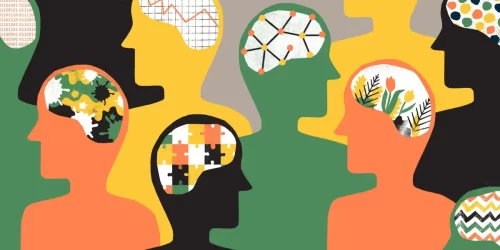
Where is the Wonder?
Think back to your educational experience when you attended elementary and high school, especially around the questions you were given for your learning. Likely, these questions came from either one of two sources: a teacher or textbook. If your formal education is anything like mine, you rarely, if ever, had a direct invitation to create your own curiosity-driven questions then learn from them. We might find pockets of classrooms or some schools where students drive their learning through the questions and ideas they create. But in my experience, and likely yours too, these learning environments are rare.
Aren’t We a Curious Bunch!
That said, we are a species of question askers! And it’s been only in the last several decades have we been able to truly appreciate the volume of questions we ask that highlight the magnitude of our curiosity-seeking nature. The term ‘just Google it’ has long been a cultural meme inviting us to input our questions into the Google search bar and get an answer. Some estimates place the number of questions asked within Google search in the billions each day. And this number does not include searches using other search engine technologies in other countries or inputs into Large Language Models (LLM) associated with artificial intelligence.
Why all this curiosity? At its core, curiosity is simply a form of information-seeking behaviour. For example, a dog or human might perk up their ears when startled by a loud sound, a ‘what-was-that?!’ reaction. We don’t waste time forming a question from the event because we automatically sense possible danger and react to it. Better to act immediately and question later. Cognitive scientists call this type of curiosity ‘perceptual’ curiosity triggered when strange or novel stimuli enters our environment (Kidd & Hayden, 2015).
But humans are much richer in our trait curiosity than most other animals. For example, we might be curious about how to cross a river so we build a boat or a bridge. We become curious about how we might feed six billion people and create new food technologies to meet this need. We are even curious about matters that have no seemingly practical application. Where did we come from? How did the universe begin? Can a dog mate with a cat? What is ‘zero’ anyway? It is questions like these that are uniquely human, a curiosity trait referred to as ‘epistemic’ curiosity meaning that we become curious based on a desire for new knowledge (Kidd & Hayden, 2015).
Curiosity and question-asking are the ‘fuel’ for our progress. The short video below encompasses why we need curiosity infused across our entire educational system especially for creativity to flourish.
Where Did All the Questions Go?
Research on question-asking in the classroom has a long history (Graesser & Person, 1994). The upshot of that research is this: it is the teachers that consistently ask the vast majority of questions in the classroom, both at the elementary and secondary levels. In one example, a study of high school classrooms (Dillon, 1988) showed teachers asking 80% of the questions, while students asked 20%. And of those 20%, only 11% would be recognized as academically rich in terms of promoting learning. These differences are consistent across much of the research. At the post-secondary level, research on question-asking by students is sparse (Graesser & Person, 1994). For me, I don’t think I was ever asked to develop a single question during my undergraduate studies to ignite my curiosity. It was only when I reached graduate school that it was okay – expected, in fact – to be curious and formulate questions for research. But this is way too late and too exclusive of a learning space to begin expressing curiosity about the world.
Why Wondering Matters
As faculty, you might ask, “Why should I care about students generating questions to learn from in my classes? My students like my classes, I get good reviews on my teaching performance from my students. And my students often do well on my tests, assignments and exams”. If this is the case for you then fantastic, keep doing what you are doing! But let me give you several reasons, both short and long term, why we should care.
First, Universal Design for Learning (UDL) encourages accessible learning based on what the students learn, how the students will learn it, and why students should be motivated to learn the material in the first place beyond just earning a grade. To motivate more of the why of learning, consider the positive, short-term outcomes of students generating their own questions for learning. Educational research has demonstrated a clear link between deeper learning and letting students generate their own questions (Chin & Osborne, 2008). So, if we want our students to read more, to write more, to discuss more and ultimately learn more then they need to take more autonomy for their learning. One way to do this is by letting students choose the questions that interest them within the curriculum framework for their courses. For example, when given the opportunity to ask their own questions, students have reported feeling ‘excited’, ‘happy’, or ‘proud’ of their questions. And when they worked with their questions, students remarked that it was ‘fun’, ‘thrilling’, and ‘interesting’ (Chin & Osborne, 2008).
Second, think for a moment about what you believe the purpose of an outcomes-based education is at Conestoga College. If you ask a dozen people, you might get a dozen different answers. But it would be hard to argue against this one outcome: to prepare students as life-long learners that will ready them to participate effectively in a global economy. We all know that the world is changing very rapidly and that technology has been a great disruptor and equalizer, especially in the 21st century. The transformation of economies toward a ‘knowledge economy’ encourage people act as ‘knowledge workers’ to create new ideas and products. Life-long learning is likely to happen when questions are not only welcomed but encouraged as a means to produce knowledge and ideas that are not only self-satisfying but may also help solve problems within our work-life and our communities.
Let’s explore one method to help your students generate questions surrounding your curriculum.
How to Encourage More Questions
If we want more curiosity-driven questions from our students, then an invitation to do so must come from you, their teacher. The following steps will help students generate their questions in a psychologically safe environment where no judgement about their questions is given.
- Begin With a Provocation
Begin by providing something that is likely to provoke curiosity-based questions. It could be an event, story, video, or a piece of their curriculum for them to wonder about. It could also be an image like the tornado in the image below. We will use this image as an example of a provocation as we proceed.

2. Ask as Many Questions as You Can
Looking at the image above, we might ask the students “What are you wondering about when you look at this image? What questions come to your mind?” Then have them write down as many questions as they can in some set time period, perhaps between one and two minutes (or longer). They do this silently without sharing their questions.
3. No Judging the Questions
As students write their questions, encourage them not to stop and judge their questions (e.g., as being too easy, too silly, too hard etc.). Just have them keep writing for the time given.
4. Don’t Answer Them…Yet!
Some students may pause to think about their questions and perhaps try to answer them. Instead, encourage them to keep writing those questions! Opportunities to answer will come later.
You Have Many Questions. Now What?
Now that they have their questions, you can help your students do several things with them. But first, an important point: you are not expected to answer their questions. These are questions born of their curiosity. Let them take ownership of the answers too.
Here is one way to use their questions for learning:
- Put students into small groups and have them orally share their questions. Have them look for common questions among the group. This is where they will find their shared knowledge gaps
- In class, students can research together and present answers to their common questions, highlighting the knowledge gains made from their efforts.
- As a group, develop further questions as needed to deepen understanding of the idea or problem
In reality, there is no end to the development of knowledge and ideas from the questions they create. That is the gift that curiosity bestows on us all. What will you do with their curiosity?
References
Chin, C., & Osborne, J. (2008). Students’ questions: a potential resource for teaching and learning science. Studies in Science Education, 44(1), 1–39. https://doi.org/10.1080/03057260701828101
Dillon, J. T. (1988). The remedial status of student questioning. Journal of Curriculum Studies, 20(3), 197–210. https://doi.org/10.1080/0022027880200301
Graesser, A. C., & Person, N. K. (1994). Question Asking During Tutoring. American Educational Research Journal, 31(1), 104-137. https://doi.org/10.3102/00028312031001104
Kidd, C., & Hayden, B. Y. (2015). The Psychology and Neuroscience of Curiosity. Neuron, 88(3), 449–460. https://doi.org/10.1016/j.neuron.2015.09.010






